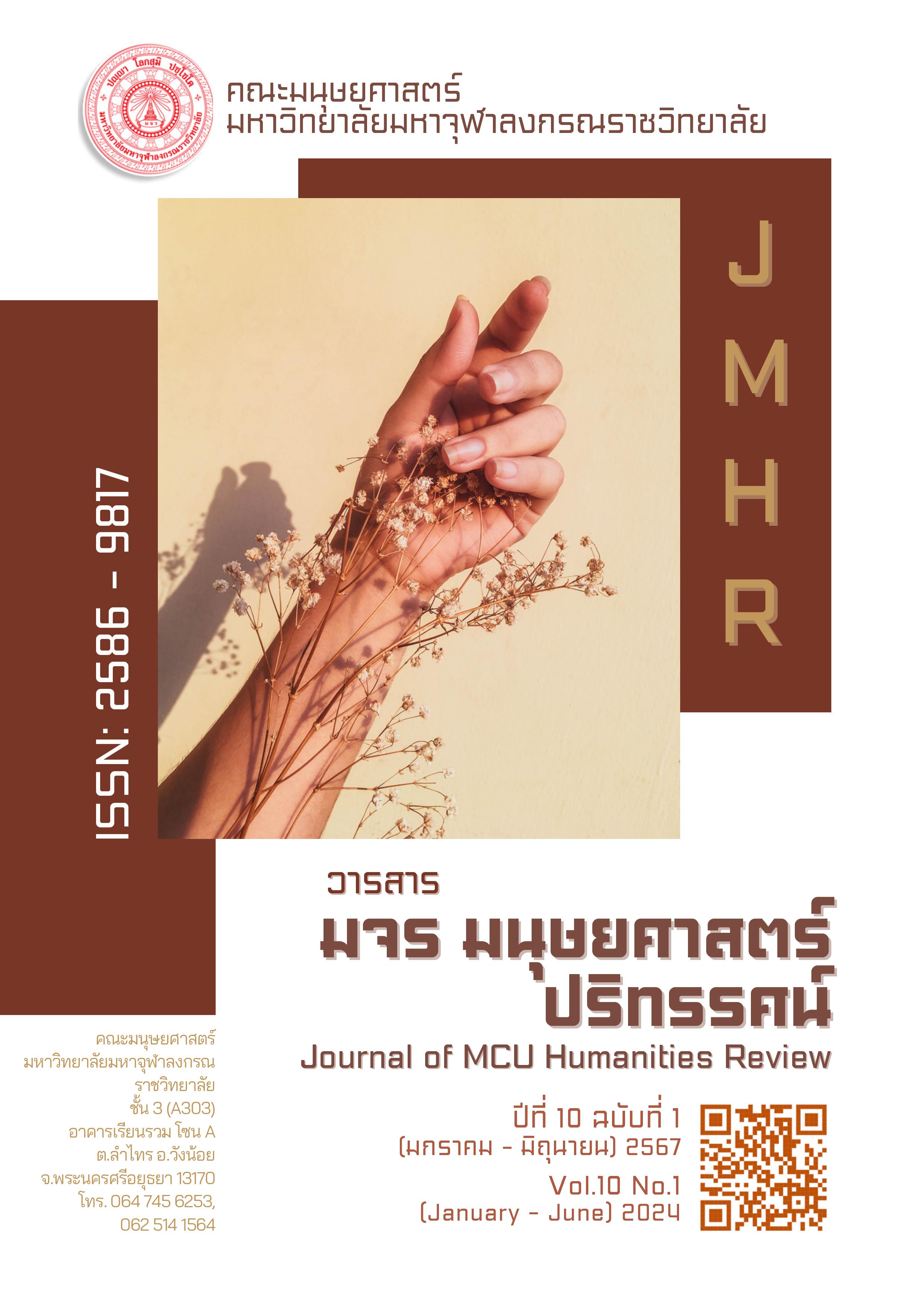การสูบบุหรี่กับจริยธรรมความรับผิดชอบ
คำสำคัญ:
การสูบบุหรี่, บุหรี่มือสอง, จริยธรรมความรับผิดชอบ, ผลกระทบบทคัดย่อ
การสูบบุหรี่เป็นรูปแบบหนึ่งของการใช้ยาเพื่อความบันเทิงที่พบบ่อยที่สุด ได้รับความนิยมมากที่สุด โดยผู้คนมากกว่าพันล้านคนทั่วโลก ซึ่งส่วนใหญ่อยู่ในประเทศกำลังพัฒนา การสูบบุหรี่ส่งผลเสียต่อสุขภาพ เป็นสาเหตุสำคัญของโรคต่าง ๆ มากมาย เช่น มะเร็งปอด หัวใจวาย โรคปอดอุดกั้นเรื้อรัง ภาวะหย่อนสมรรถภาพทางเพศและความพิการแต่กำเนิดและโรคที่เกี่ยวข้องกับการสูบบุหรี่ เป็นต้น การสูบบุหรี่ทำให้มีผู้เสียชีวิตมากกว่าห้าล้านคนต่อปี แสดงให้เห็นว่าสามารถคร่าชีวิตผู้สูบบุหรี่ระยะยาวเทียบได้กับอัตราการเสียชีวิตโดยเฉลี่ยของผู้ไม่สูบบุหรี่ และเป็นสาเหตุการเสียชีวิตของผู้ไม่สูบบุหรี่อีกด้วย ปัจจุบันประเทศไทยประสบปัญหาด้านสุขภาพเพราะผลกระทบจากการสูบบุหรี่ทั้งของผู้สูบบุหรี่เองและผู้ไม่สูบเนื่องจากบุหรี่มือสอง มือสามด้วย หน่วยงานของไทยที่รับผิดชอบเรื่องสุขภาพรวมถึงองค์กรของพระพุทธศาสนาได้รณรงค์ทุกรูปแบบ เพื่อให้สังคมได้ตระหนักรู้ถึงพิษภัยของบุหรี่ บทความนี้มุ่งนำเสนอ ผลกระทบของการสูบบุหรี่ในสังคมไทยในหลากหลายมิติและจริยธรรมความรับผิดชอบของผู้สูบบุหรี่ที่พึงมีต่อสังคมโดยประยุกต์ใชหลักศีลห้าและหลักเมตตาธรรมโดยเน้นผู้สูบเข้าใจความจริง คือ ตัวเองเป็นผู้สูบที่พยายามเลิกหรือกำลังสูบก็ยังรักตัวเอง ไม่อยากให้ตัวเองเกิดโรคภัย คนอื่นสังคมรอบข้างก็รักสุขภาพ เกลียดโรคภัยเช่นกัน
เอกสารอ้างอิง
กรมควบคุมโรค. (2566). รายงานประจำปี 2566. กรุงเทพฯ : สำนักงานสถิติแห่งชาติ กระทรวงดิจิทัลเพื่อเศรษฐกิจและสังคม.
ชมรมนักศึกษาพยาบาลสร้างสังคมไทยปลอดบุหรี่. (2566). สรุปโครงการรำไพพรรณีร่วมใจสานพลังภายในมหาวิทยาลัย ลด ละ เลิก บุหรี่ไฟฟ้า. คณะพยาบาลศาสตร์ มหาวิทยาลัยราชภัฏรำไพพรรณี.
ชลลดา ไชยกุลวัฒนา. (2560). พฤติกรรมสูบบุหรี่และปัจจัยเสี่ยงที่สัมพันธ์กับการสูบบุหรี่ของวัยรุ่นตอนต้นจังหวัดพะเยา. วารสารพยาบาลกระทรวงสาธารณสุข, 27(3), 57-67.
ธนธร กานตอาภา. (2564). ปัจจัยที่สัมพันธ์กับการสูบบุหรี่ของนักเรียนประถมศึกษาตอนปลายโรงเรียนขยายโอกาสทางการศึกษา อำเภอคำม่วง จังหวัดกาฬสินธุ์. วารสารสำนักงานป้องกันควบคุมโรคที่ 7 ขอนแก่น, 28(2),41-52.
มหาจุฬาลงกรณราชวิทยาลัย. (2539). พระไตรปิฎกภาษาไทยฉบับมหาจุฬาลงกรณราชวิทยาลัย. กรุงเทพฯ : โรงพิมพ์มหาจุฬาลงกรณราชวิทยาลัย.
โรงพยาบาลกรุงเพทพฯ นครราชสีมา. (2567). “ควันบุหรี่มือสาม” ภัยมืดที่มองไม่เห็น. สืบค้น 25 กุมภาพันธ์ 2567, จาก https://www.bkh.co.th/smoke/
โรงพยาบาลวิภาวดี. (2024). “10 โรคแทรกซ้อนจากภัยบุหรี่ไฟฟ้า”. สืบค้น 25 กุมภาพันธ์ 2567, จาก https://shorturl.at/rtER7
วศิน พิพัฒนฉัตร. (2561). พุทธศาสนา ศีลห้าและยาสูบ. ศูนย์วิจัยและจัดการความรู้เพื่อการควบคุมยาสูบ. สืบค้น 25 กุมภาพันธ์ 2567, จาก https://shorturl.at /knrF8.
วิโรจน์ วีรชัย และคณะ. (2557). ยาและสารเสพติด (Drugs and Addictive Substances). การแพทย์ไทย 2554-2557. สืบค้น 27 กุมภาพันธ์ 2567, จาก https://shorturl.at/brY01
สุวรรณา เรืองกาญจนเศรษฐ์ และคณะ. (2566). บุหรี่ไฟฟ้า มหันตภัยร้ายทำลายเยาวชน. วารสารวิชาการสาธารณสุข, 32(5), 946-961.
สำนักงานคณะกรรมการอาหารและยา. (2544). ความรู้เรื่องยาเสพติด. สืบค้น 25 กุมภาพันธ์ 2567, จาก https://shorturl.at/DKRY3
สำนักงานคณะกรรมการอาหารและยา (อย.). (2567). คัดเลือกยาอดบุหรี่เข้าสู่บัญชียาหลักช่วยลดความเสี่ยงเกิดมะเร็งปอด. สืบค้น 27 กุมภาพันธ์ 2567, จาก https://shorturl.at/ipvS1
สำนักงานกองทุนสนับสนุนการสร้างเสริมสุขภาพ (สสส.,2566). จดหมายข่าวชุมชนคนรักสุขภาพ ฉบับสร้างสุข, 19(259), 1-13.
สื่อมัลติมีเดียกรมอนามัย. (2562). “หญิงท้องสูบบุหรี่ “เสี่ยงแท้ง” เด็กในท้องปากแหว่ง “เพดานโหว่”. สืบค้น 25 กุมภาพันธ์ 2567, จาก https://shorturl.at/forF5
BBC News ไทย. (2018). “งานวิจัยล่าสุดชี้ "ควันบุหรี่มือสอง" ทำให้เด็กเสี่ยงเสียชีวิตจากโรคปอดเมื่อโตขึ้น”. สืบค้น 27 กุมภาพันธ์ 2567, จาก https://shorturl.at/jsyX1
U.S. Department of Health and Human Services. (2010). A Report of the Surgeon General: How Tobacco Smoke Causes Disease: What It Means to You. Atlanta: U.S.
ดาวน์โหลด
เผยแพร่แล้ว
รูปแบบการอ้างอิง
ฉบับ
ประเภทบทความ
หมวดหมู่
สัญญาอนุญาต
ลิขสิทธิ์ (c) 2024 วารสาร มจร มนุษยศาสตร์ปริทรรศน์

อนุญาตภายใต้เงื่อนไข Creative Commons Attribution-NonCommercial-NoDerivatives 4.0 International License.






